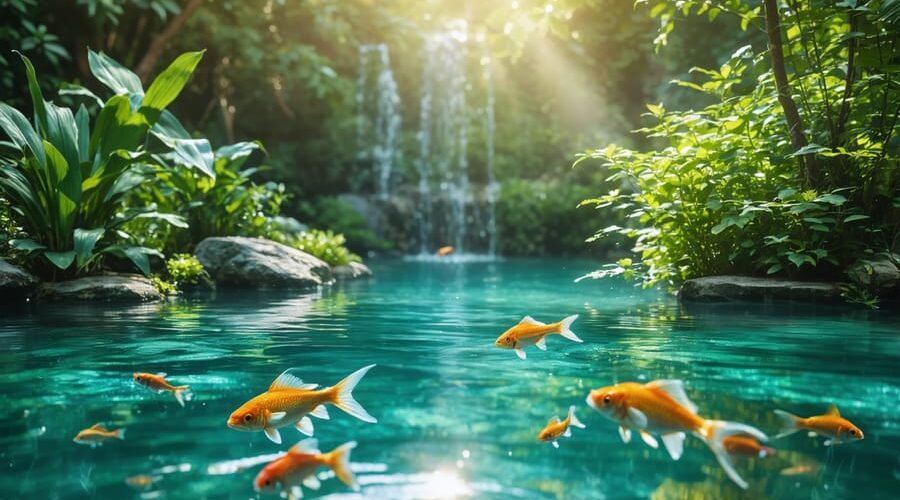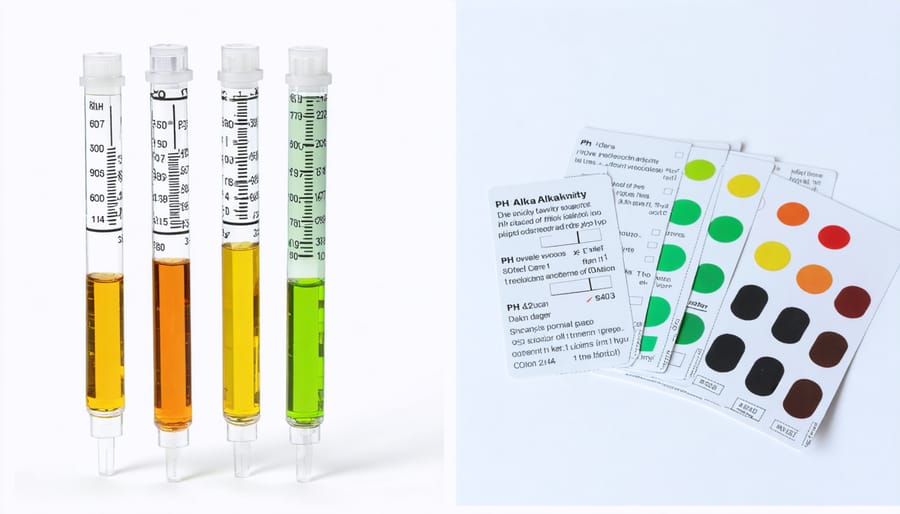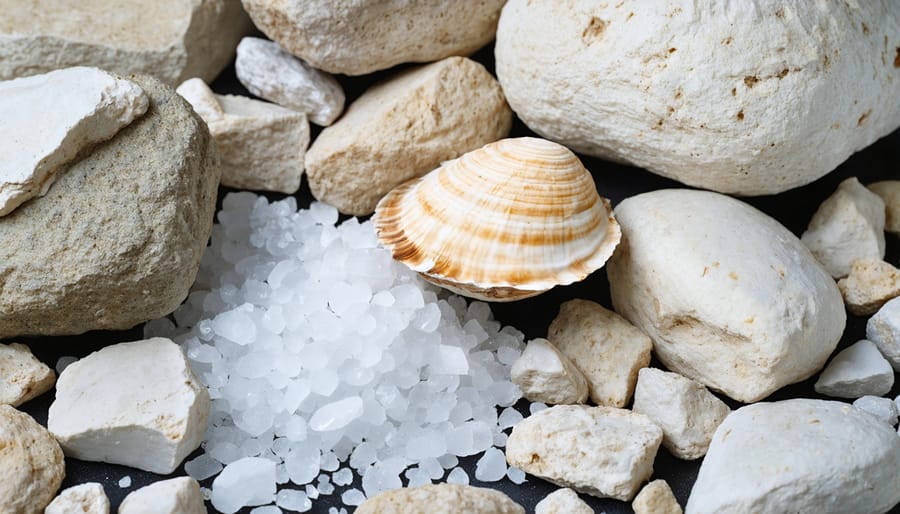
Keep Your Pond Perfect: Simple Steps to Balance Alkalinity
Maintaining proper alkalinity in your pond is the cornerstone of a healthy aquatic ecosystem. Like the pH balance in our bloodstream, alkalinity acts as a crucial buffer system in pond water, preventing dramatic swings that could harm fish and plant life. For pond owners and water gardening enthusiasts, understanding alkalinity isn’t just about chemistry—it’s about creating a stable, thriving environment where aquatic life can flourish.
When pond alkalinity drops too low, fish become stressed, beneficial bacteria struggle to function, and plants may show signs of nutrient deficiency. Conversely, proper alkalinity levels (ideally between 100-200 ppm) support crystal-clear water, healthy fish, and vibrant plant growth. This invisible yet powerful water property serves as your pond’s natural defense system, neutralizing acids and maintaining water quality throughout seasonal changes.
Whether you’re a seasoned pond keeper or just starting your water gardening journey, mastering alkalinity management will help you create the serene, balanced water feature you’ve always dreamed of.
What is Pond Alkalinity (And Why It Matters)
The Difference Between pH and Alkalinity
While pH and alkalinity are closely related, they serve different roles in your pond’s ecosystem. Think of pH as a snapshot of how acidic or basic your water is at any given moment, while alkalinity acts as your pond’s built-in stability system. To master your pond chemistry, understanding this difference is crucial.
pH measures the concentration of hydrogen ions in water on a scale from 0 to 14, with 7 being neutral. Alkalinity, on the other hand, measures your pond’s ability to resist changes in pH, acting like a buffer. It’s similar to having shock absorbers in your car – the stronger your alkalinity, the better your pond can handle pH fluctuations.
For example, a pond might have a perfect pH of 7.4, but if its alkalinity is low, that pH won’t stay stable for long. Rain, fish waste, or decomposing plants could quickly throw it off balance. That’s why maintaining proper alkalinity is just as important as monitoring pH – it helps keep your pond’s ecosystem stable and your aquatic friends happy.
Signs Your Pond’s Alkalinity Needs Attention

Testing Your Pond’s Alkalinity
Testing your pond’s alkalinity is a straightforward process that any pond owner can master. With a reliable water quality testing kit, you can monitor your pond’s health in just a few simple steps.
First, collect a water sample from about 18 inches below the surface, using a clean container. Make sure to avoid touching the inside of the container to prevent contamination. Next, follow your test kit’s instructions to add the required number of drops or tablets to your water sample.
Most test kits use a color-changing solution that you’ll compare to a chart. The water will change color based on the alkalinity level, typically ranging from yellow (low) to blue or green (high). Match the color of your sample to the chart provided to determine your pond’s alkalinity level.
For best results, test your pond’s alkalinity weekly during peak growing season and monthly during winter. Remember to record your readings in a log to track changes over time – this helps you spot potential problems before they become serious issues.
Natural Ways to Adjust Pond Alkalinity
Using Limestone and Other Natural Materials
Limestone is one of nature’s most effective tools to maintain pond balance naturally. Adding crushed limestone or agricultural lime to your pond helps boost alkalinity levels gradually and safely. Simply scatter the limestone around the pond’s edges or place limestone rocks strategically in and around your water feature.
Other natural materials that can help include oyster shells, clam shells, and coral rock. These calcium-rich materials slowly dissolve over time, releasing beneficial minerals that increase alkalinity. You can create decorative borders using these materials, combining functionality with aesthetic appeal.
For smaller ponds, try using limestone gravel as part of your filtration system or bottom substrate. This provides a constant, gentle release of minerals while also creating natural hiding spots for beneficial bacteria and small aquatic life.
Remember to add these materials gradually and monitor your alkalinity levels regularly. Natural solutions take longer to work than chemical treatments, but they provide more stable, long-lasting results and contribute to a healthier ecosystem overall.

Maintaining Stable Alkalinity Levels
Maintaining stable alkalinity levels in your pond doesn’t have to be complicated. The key is consistency and regular monitoring. Start by testing your pond water weekly, then adjust to monthly once levels stabilize. Adding crushed coral or limestone to your filter system provides a natural, long-term buffer that slowly releases minerals as needed.
Consider installing a dedicated biological filter, which helps maintain both alkalinity and beneficial bacteria. During heavy rains, protect your pond with a cover to prevent dilution of mineral content. If you’re adding new water, always treat it first and test the alkalinity to match your pond’s levels.
Keep an eye on your plants too – they play a crucial role in maintaining balance. Aim for about 60% of your pond’s surface to be covered with vegetation. Floating plants like water lilies not only look beautiful but also help regulate water chemistry.
For ongoing maintenance, remove debris regularly and avoid overfeeding fish, as excess waste can affect alkalinity levels. If you notice sudden changes, check for leaks or other issues that might be disrupting your pond’s natural balance.
Maintaining proper alkalinity in your pond is crucial for a healthy aquatic ecosystem. Regular monitoring helps prevent sudden pH swings and ensures your fish and plants thrive. Make it a habit to test alkalinity levels weekly, especially during seasonal changes. Remember, prevention is always easier than correction, so keep your testing kit handy and address any issues promptly. Your pond will reward you with crystal-clear water and happy, healthy inhabitants for years to come.
